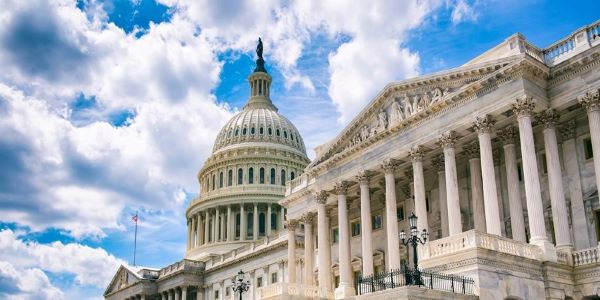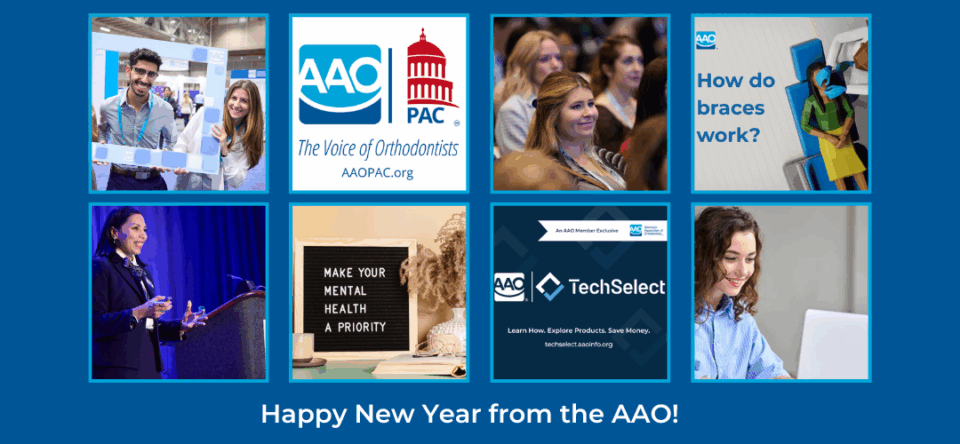The AAO has completed data analysis of responses to its first Inclusion and Engagement member survey, developed this past summer by the Inclusion and Engagement Task Force and then distributed to the membership.
“Responses to the Inclusion and Engagement survey indicate the AAO has some strength in terms of inclusiveness, collegiality and professional opportunities extending to members from all demographic groups,” said Dr. J. Kendall Dillehay, AAO president.
“We also find that we have room for growth,” added Dr. Dillehay. “The I&E Task Force will lead us in undertaking more in-depth dialogues so that we can understand where and how the membership experience for minority orthodontists can be improved. We would like to know more about what minority members’ needs are for support in practice, professional development and path to leadership in organized orthodontics. Upon learning more, as leaders we will work to develop solutions.”
“A key goal of our survey was to gain intelligence to support the AAO in effectively tailoring initiatives to meet the needs of all members,” said Dr. Sunil Kapila, who became the Inclusion and Engagement Task Force chair upon its formation last February. “We also wanted to learn about perceptions of the AAO membership around diversity and inclusion issues, and to assess perceived barriers to getting involved in AAO leadership. On each question, we wanted to compare the responses of minority respondents with those who are not minority group members. I hope that this survey provides an important starting point from which initiatives on inclusion and engagement can be planned and implemented.”
The I&E survey was distributed to all members worldwide, with 11 percent of respondents being from outside the United States and Canada. References to minority respondents include anyone who responded identifying themselves as:
▪ Any non-white race/ethnicity
▪ Female
▪ Transgender/gender non-conforming
▪ Non-heterosexual sexual orientation
▪ Any of the disabilities included in the survey.
Perceptions on Inclusiveness: Quantifying the AAO Experience for Minority Members
● Inclusiveness Question:
“The AAO is committed to and supports diversity, equality, and inclusion.”
Perception of the AAO as an inclusive organization received a positive rating from respondents overall, with a caveat: Among minority respondents 61% agreed or strongly agreed with that statement. A strong plurality of non-minority members (75%) strongly agreed or agreed.
● Discrimination Question:
“Have you or someone you know ever encountered any discriminatory events related to the AAO based on your (or their) personal characteristics (race, ethnicity, gender identity or gender expression, sexual orientation, religion, age, height, weight, political affiliation, or social class)?”
On the question of discrimination, 15 percent of minority respondents responded in the affirmative, as did 3% of non-minorities.
● Equal Opportunity Question:
“I have opportunities at the AAO for professional success and leadership that are similar to my colleagues.”
64% of minority respondents agreed or strongly agreed with the statement. Among non-minority respondents, 85% agreed or strongly agreed.
Additional responses included:
● “At the AAO people of all cultures and backgrounds are respected and valued.” (Strongly Agree or Agree).
Minority: 69%
Non-minority: 87%
● “I have been able to find like-minded individuals of similar background at the AAO.” (Strongly Agree or Agree).
Minority: 72%
Non-minority: 86%
● “A lack of diversity and/or inclusion at the AAO has negatively impacted my professional growth.” (Strongly Agree or Agree).
Minority: 14%
Non-minority: 6%
Developing More Diverse Leadership: Which Solutions are Best?
Minority and non-minority members showed some agreement and some disagreement in viewpoints on the question, “What are the best ways for the AAO to increase diversity in its leadership?” Responses included:
● Identify diverse candidates with equal or greater experience than non-diverse candidates.
Minority: 44%
Non-minority: 27%
● Find ways to help diverse members get involved in leadership.
Minority: 63%
Non-minority: 40%
● Create a culture and environment at the AAO and its constituent and component groups where everyone’s voice is welcome and people aren’t afraid to offer their perspective.
Minority: 78%
Non-minority: 59%
● Create an AAO leadership diversity policy that encompasses all level of leadership roles.
Minority: 38%
Non-minority: 15%
● Other
Minority: 25%
Non-minority: 10%
Survey Data Precision
The survey report to the AAO Board of Trustees indicated that the precision of percentages reported for each question is approximately ± 3.4% but can vary depending on the number of responses to an individual question and the amount of agreement to the question. In addition:
▪ Females were more likely to complete the survey than males.
▪ Each group of ethnic minorities were more likely to respond to the survey than white members.
For Fiscal Year 2021, membership data showed a total of 22.1% of U.S.-based, active AAO members represented racial and ethnic minority groups*, with 33.8% of active U.S. members being female.** (Active members are those currently engaged in orthodontic practice.)
* AAO member race/ethnicity has been tracked since 2019 only and most available data pertain to active members in North America. The Fiscal Year 2021 racial/ethnic minority demographic breakdown is:
● Asian – 712, or 12.0% of active U.S./Canadian membership
● Black/African-American – 244, or 4.1% of active U.S./Canadian membership
● Hispanic/Latino – 237, or 4.0% of active U.S./Canadian membership
● Other Underrepresented Groups (including American-Indian, Native Hawaiian/Pacific Islander, mixed race and other categories) – 117, or 2.0% of active U.S./Canadian membership
** In addition to efforts by the Inclusion and Engagement Task Force, the AAO Special Committee on Women Orthodontists has been working for several years to help ensure the needs of the rapidly growing female membership are addressed. A profile featuring SCWO chair Dr. Valerie Martone provides an overview of the committee’s work.



